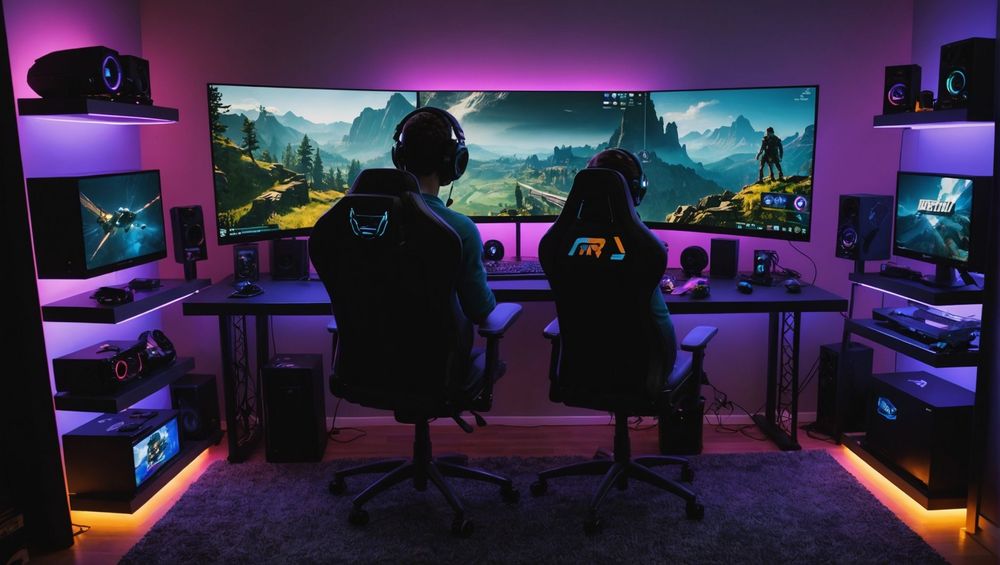When it comes to computer monitors, choosing the right type can dramatically enhance your computing experience. Monitors come in various types, each designed to serve specific purposes, offer unique technologies, and deliver distinct visual performances. This article explores the most common types of monitors, helping you understand their characteristics and choose the best one for your needs.
1. LCD Monitors

Liquid Crystal Display (LCD) monitors have become the industry standard due to their slim design and energy efficiency. They utilize liquid crystals sandwiched between two pieces of glass, which light up to create images. LCD monitors are popularly used for both personal and professional use, thanks to their vibrant colors and sharp resolutions. They are available in various sizes, from small screens for basic tasks to large screens for gaming and professional work.
Advantages of LCD monitors include:
- Lightweight and compact, allowing for more desk space.
- Lower energy consumption compared to older CRT models.
- Reduced flicker, which minimizes eye strain.
- Variety in display resolutions and aspect ratios.
However, they do have some limitations. The color accuracy may degrade when viewed from certain angles, while their performance in extremely bright settings may not match that of other monitor types.
2. LED Monitors

Light Emitting Diode (LED) monitors are essentially advanced versions of LCD monitors, but they use LED backlighting instead of traditional fluorescent lights. This technology results in better contrast ratios, dynamic color rendering, and thinner panel designs. LED monitors can significantly enhance the viewing experience, making them a popular choice for gamers and graphic designers.
Key benefits of LED monitors include:
- Higher brightness levels for improved visibility in bright environments.
- Better energy efficiency due to low power consumption.
- Longer lifespan compared to LCDs.
- Less eye strain thanks to smoother transitions and less flicker.
Despite these advantages, LED monitors can sometimes be more expensive, particularly for high-end models. Additionally, they can still experience color accuracy issues, though modern versions have significantly mitigated these problems.
3. OLED Monitors
Organic Light Emitting Diode (OLED) monitors represent a breakthrough in display technology, offering unparalleled picture quality. Each pixel in an OLED monitor emits its light, allowing for perfect blacks and vibrant colors. These monitors are perfect for media consumption, as they provide an immersive viewing experience with outstanding contrast and color precision.
The main advantages of OLED monitors include:
- Exceptional contrast ratios and color accuracy.
- Fast response times, making them ideal for fast-paced gaming.
- Wide viewing angles with minimal color distortion.
- Thin and lightweight designs.
However, OLEDs come with their set of challenges, like susceptibility to burn-in, which can happen with static images displayed for prolonged periods. Moreover, they tend to be on the pricier side compared to LCD and LED monitors.
4. Curved Monitors
Curved monitors are designed to wrap around your field of view, providing a more immersive experience, particularly for gaming and multimedia. The curvature of the screen minimizes distortion and reflects a broader field of vision, allowing the user to focus better on the content displayed. Curved monitors are typically available in both LCD and LED technologies.
Benefits of curved monitors are numerous:
- Enhanced depth perception and immersion in games and movies.
- Reduced eye strain during long hours of use.
- Wider field of view compared to flat screens.
- Stylish design that can complement modern setups.
Nonetheless, they may not be ideal for everyone. Some users might find the curvature distracting for general computing tasks, and the price can be comparatively higher than traditional flat monitors.
5. Gaming Monitors
Gaming monitors are crafted specifically for gaming enthusiasts, designed to deliver high refresh rates, low response times, and advanced synchronization technologies like NVIDIA G-Sync or AMD FreeSync. These monitors are often equipped with enhanced features like customizable RGB lighting, high dynamic range (HDR) support, and multiple connectivity options. They ensure that gamers experience smooth, lag-free gameplay.
Essential features of gaming monitors include:
- High refresh rates (144Hz or higher) for fluid motion.
- Low input lag for responsive control.
- Extensive support for adaptive sync technologies.
- Enhanced resolution options, often going beyond 1080p.
However, setting up a gaming monitor usually requires a powerful graphics card to fully utilize its capabilities, making it a more significant investment for avid gamers.
Conclusion
Understanding the different types of monitors is crucial for making informed decisions based on your specific computing needs. Whether you require a simple LCD for everyday tasks or an advanced OLED for professional graphic design, there’s a monitor tailored for you. Factors such as resolution, response time, and special features like curved displays or gaming capabilities should influence your choice. By considering these aspects, you can enhance both your productivity and leisure activities.
FAQs
- What is the best monitor for gaming?
The best monitor for gaming generally features a high refresh rate (144Hz or higher), low input lag, and compatibility with adaptive sync technologies like NVIDIA G-Sync or AMD FreeSync. Look for models that offer 1ms response times for optimal performance. - Can I use a gaming monitor for regular tasks?
Absolutely! Gaming monitors not only excel in gaming but also provide excellent clarity and color accuracy for everyday tasks like browsing, streaming, and productivity work. - What’s the difference between OLED and LED monitors?
OLED monitors feature self-emitting technology for each pixel, delivering exceptional contrast and color accuracy. In contrast, LED monitors use backlighting to illuminate the screen, which can result in less vivid colors and contrast. - Are curved monitors worth it?
Curved monitors can provide a more immersive viewing experience, making them worthwhile for gaming and multimedia experiences. However, personal preference plays a significant role, so you may want to try one before committing. - What monitor size should I choose?
Your monitor size should depend on your workspace and how far you sit from the screen. Typically, 24-27 inches is ideal for general office use, while larger sizes (32 inches or more) are better for immersive gaming and cinematic experiences.


